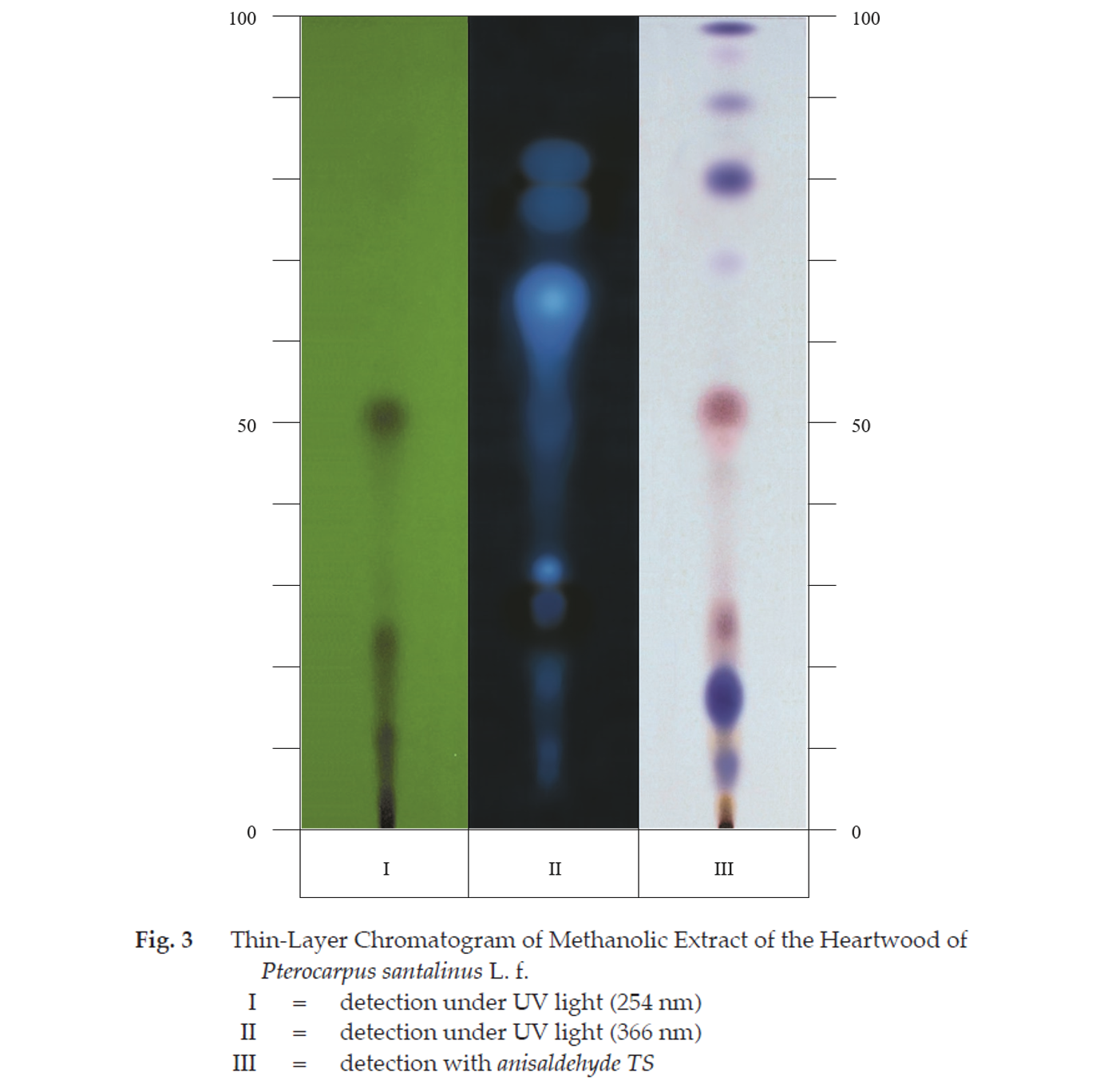ตำรามาตรฐานยาสมุนไพรไทย
Thai Herbal Pharmacopoeia
สำนักยาและวัตถุเสพติด กรมวิทยาศาสตร์การแพทย์ กระทรวงสาธารณสุข
Bureau of Drug and Narcotic, Department of Medical Sciences, Ministry of Public Health(Tinospora crispa (L.) Hook.f. & Thomson)
(Nelumbo nucifera Gaertn.)
(Centella asiatica (L.) Urb.)
(Centella Dry Extract)
(Centella Cream)
(Mesua ferrea L.)
(Piper sarmentosum Roxb.)
(Piper sarmentosum Roxb.)
(Pterocarpus santalinus L. f.)
(Santalum album L.)
(Senna tora (L.) Roxb.)
(Senna alata (L.) Roxb.)
(Senna Alata Tea)
(Piper retrofractum Vahl)
(Myristica fragrans Houtt)
(Andrographis paniculata (Burm. f.) Nees)
(Andrographis Capsules)
(Allium ascalonicum L.)
(Ocimum tenuiflorum L.)
(Curcuma longa L.)
(Turmeric Capsules)
(Turmeric Dry Extract)
(Turmeric Dry Extract Capsules)
(Arcangelisia flava (L.) Merr.)
(Curcuma sp.)
Harrisonia perforata (Blanco) Merr.
(Aristolochia pierrei Lecomte)
(Zingiber officinale Roscoe)
(Ginger Capsules)
(Ginger Tea)
(Cassia fistula L.)
(Nardostachys jatamansi (D. Don) DC.)
(Angelica sinensis (Oliv.) Diels)
Artemisia annua L.
(Ligusticum sinense Oliv. cv. Chuanxiong)
(Neopicrorhiza scrophulariiflora Pennell)
(Atractylodes lancea (Thunb.) DC.)
(Aucklandia lappa Decne)
(Terminalia chebula Retz.)
(Angelica dahurica (Hoffm.) Benth. & Hook. f. ex Franch. & Sav. var. dahurica)
(Kaempferia parviflora Wall. ex Baker)
(Hibiscus sabdariffa L.)
(Roselle Tea)
(Allium sativum L.)
(Zingiber zerumbet (L.) Sm.)
(Wurfbainia testacea (Ridl.) Škorničk.& A. D. Poulsen)
(Cannabis sativa L.)
(Myristica fragrans Houtt)
(Dracaena cochinchinensis (Lour.) S. C. Chen)
(Ficus racemosa L.)
(Hyptis suaveolens (L.) Poit.)
Clerodendrum indicum (L.) Kuntze
(Phyllanthus emblica L.)
(Citrus hystrix DC.)
(Citrus hystrix DC.)
(Areca catechu L.)
(Momordica charantia L.)
Moringa oleifera Lam.
(Aegle marmelos (L.) Corrêa)
(Solanum trilobatum L.)
(Morus alba L.)
Gynostemma pentaphyllum(Thunb.)
Makino
(Clinacanthus nutans (Burm. f.) Lindau)
(Cissus quadrangularis L.)
(Mimusops elengi L.)
(Zingiber montanum (J. König) Link. ex A. Dietr.)
(Piper betle L.)
(Capsicum annuum L.)
(Capsicum Oleoresin)
(Capsicum Gel)
(Piper nigrum L.)
(Piper nigrum L.)
(Eurycoma longifolia Jack)
(Thunbergia laurifolia Lindl.)
(Piper wallichii (Miq.) Hand.-Mazz.)
Senna garrettiana (Craib) H. S. Irwin & Barneby
(Terminalia bellirica (Gaertn.) Roxb.)
(Terminalia chebula Retz.)
(Caesalpinia bonduc (L.) H. Roxb.)
(Tarlmounia elliptica (DC.) H. Rob., S. C. Keeley, Skvaria & R. Chan)
(Hog Creeper Vine Dry Extract Capsiles)
(Hog Creeper Vine Dry Extract)
(Brachypterum scandens (Roxb.) Miq.)
(Lepidium sativum L.)
(Nigella sativa L.)
(Cuminum cyminum L.)
(Foeniculum vulgare Mill.)
(Plantago ovata Forssk.)
(Pimpinella anisum L.)
(Carum carvi L.)
(Anethum graveolens L.)
(Trachyspermum ammi (L.) Sprague)
Albizia procera (Roxb.) Benth.
(Acorus calamus L.)
(Tiliacora triandra (Colebr.) Diels)
Cyanthillium cinereum (L.) H. Rob.
(Orthosiphon aristatus (Blume) Miq.)
Murdannia loriformis (Hassk.) R. S. Rao & Kammathy
(Capparis micracantha DC.)
(Chrysopogon zizanioides (L.) Roberty)
(Cyperus rotundus L.)
(Cannabis sativa L.)
(Syzygium aromaticum (L.) Merr. & L. M. Perry)
(Boesenbergia rotunda (L.) Mansf.)
(Acanthus ebracteatus Vahl)
(Acanthus ilicifolius L.)
(Kaempferia galanga L.)
(Curcuma comosa Roxb.)
Betula alnoides Buch.-Ham. ex D. Don
Cannabis sativa L.
Carthamus tinctorius L
Mitragyna speciosa (Korth.) Havil
Mallotus repandus (Rottler) Müll. Arg
Azadirachta indica A. Juss. var. siamensis Valeton
Azadirachta indica A. Juss. var. siamensis Valeton
Punica granatum L.
Rhinacanthus nasutus (L.) Kurz
Baliospermum solanifolium (Burm.) Suresh
Curcuma aeruginosa Roxb
Boesenbergia kingii Mood & L. M. Prince
Senegalia rugata (Lam.) Britton & Rose
Acacia concinna (Willd.) DC.
Senegalia rugata (Lam.) Britton & Rose
Acacia concinna (Willd.) DC.
Senna alexandriana Mill. var. alexandriana
Cassia acutifolia Delile, Cassia angustifolia Vahl
Butea superba Roxb. ex Willd.
[Plaso superba (Roxb. ex Willd.) Kuntze, Rudolphia superba (Roxb. ex Willd.) Poir.
Pueraria candollei Graham
ex Benth. var. mirifica (Airy Shaw & Suvat.) Niyomdham
Streblus asper Lour.
Suregada multiflora (A. Juss.) Baill. (Gelonium
multiflorum A. Juss.
Red Sandalwood is the dried heartwood of Pterocarpus santalinus L. f. (Family Fabaceae), Herbarium Specimen Number: BKF 170463, Crude Drug Number: DMSc 0933.
Constituents Red Sandalwood contains red pigments consisting mainly of santalin A and santalin B. It also contains isoflavones, a small amount of volatile oil, triterpenes, sterols, etc.
Description of the plant (Figs. 1a, 1b) Tree up to 15 m tall; deciduous; bark deeply cracked into vertical and horizontal rectangular plates, blackish brown. Leaves mos tly trifoliate, rarely 4 or 5, alternate, 10 to 18 cm long; petiole swollen at base; leaflet broadly elliptic to ovate, 7 to 10 cm long, 3.5 to 5.5 cm wide, apex round or deeply notched, base round or slightly cordate, margin entire, blade leathery, shiny. Inflorescence axillary or terminal, raceme or panicle; bract and bracteole small, often caducous. Flower yellowish, 1.6 to 2 cm long; petals 5, papilionaceous; stamens 10, subdiadelphous; ovary superior, shortly stalked, 2-ovuled. Fruit samara, flat, obliquely rounded, broadly hardened winged around margin, beaked, 3.5 to 5 cm in diameter. Seeds 2, smooth, reddish brown.
Description Odour, aromatic; taste, slightly astringent.
Macroscopical (Fig. 1a) Irregular pieces of woody segment, dense, hard and heavy, but readily split. Dark red to blackish red. Transversely cut surface showing ring zones. Longitudinally cut surface showing alternating dark and light zones.
Microscopical (Figs. 2a, 2b, 2c, 2d, 2e) Transverse section of the heartwood shows vessel, xylem parenchyma, xylem ray, and fibre. Vessel, large, thick-walled, scattered, solitary or small cluster, some containing red resin. Xylem parenchyma, oval, thick-walled, band paratracheal. Xylem ray, mostly 1 row. Fibre, thick-walled.
Tangential and radial longitudinal sections of the heartwood show vessel, xylem parenchyma, xylem ray, and fibre. Vessel, large, with bordered-pitted and simple perforation plate, some of which contain red resin. Axial parenchyma, rectangular, thick-walled, some of which contain prismatic crystals of calcium oxalate. Xylem ray; in tangential longitudinal view, mostly uniseriate, oval; in radial longitudinal view, rectangular, perpendicular to other adjacent cells. Fibre, thick-walled, simple pitted.
Red Sandalwood in powder possesses the diagnostic microscopical characters of the unground drug.
Storage Red Sandalwood shall be stored in a dry place, protected from light.
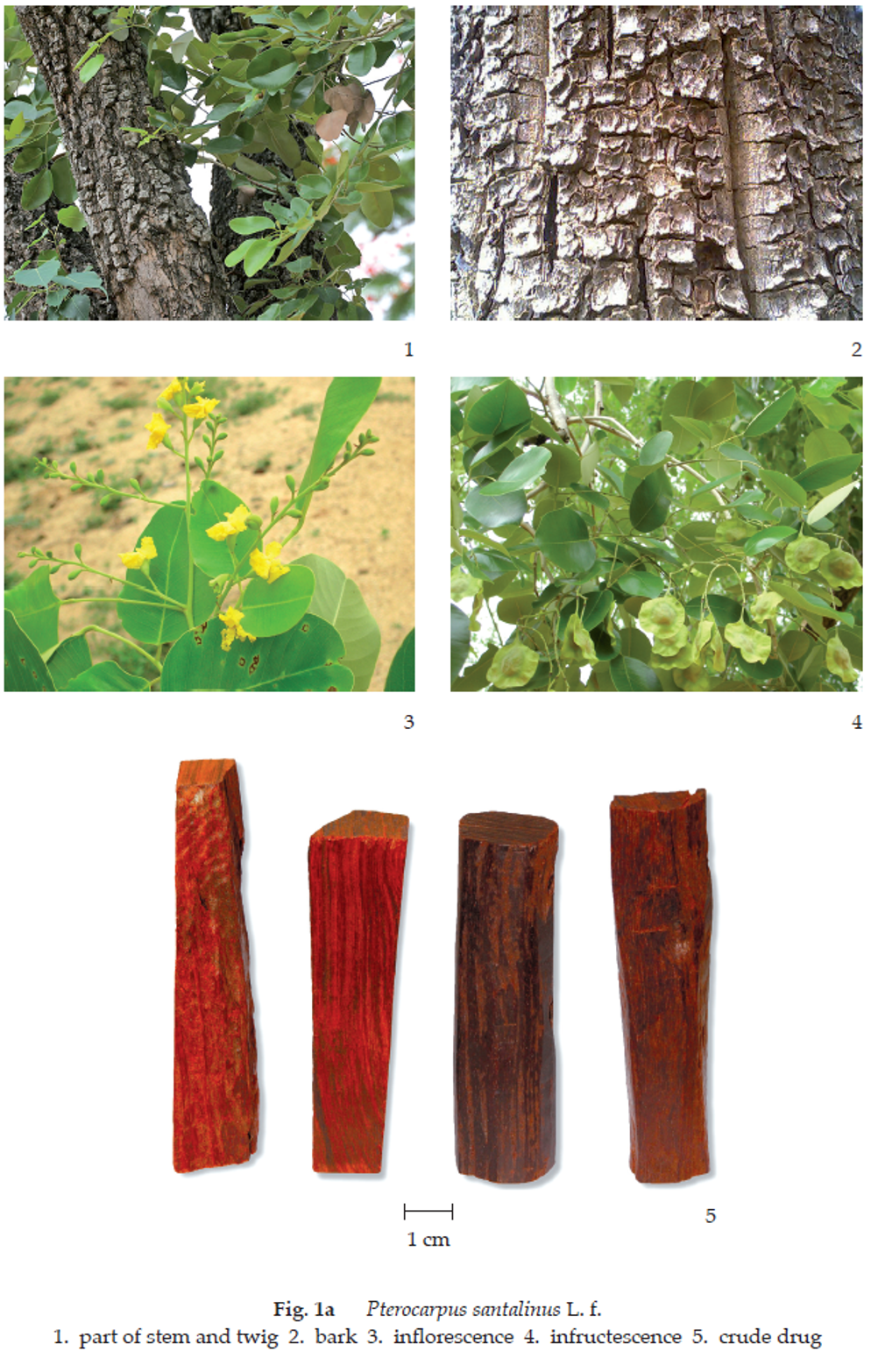
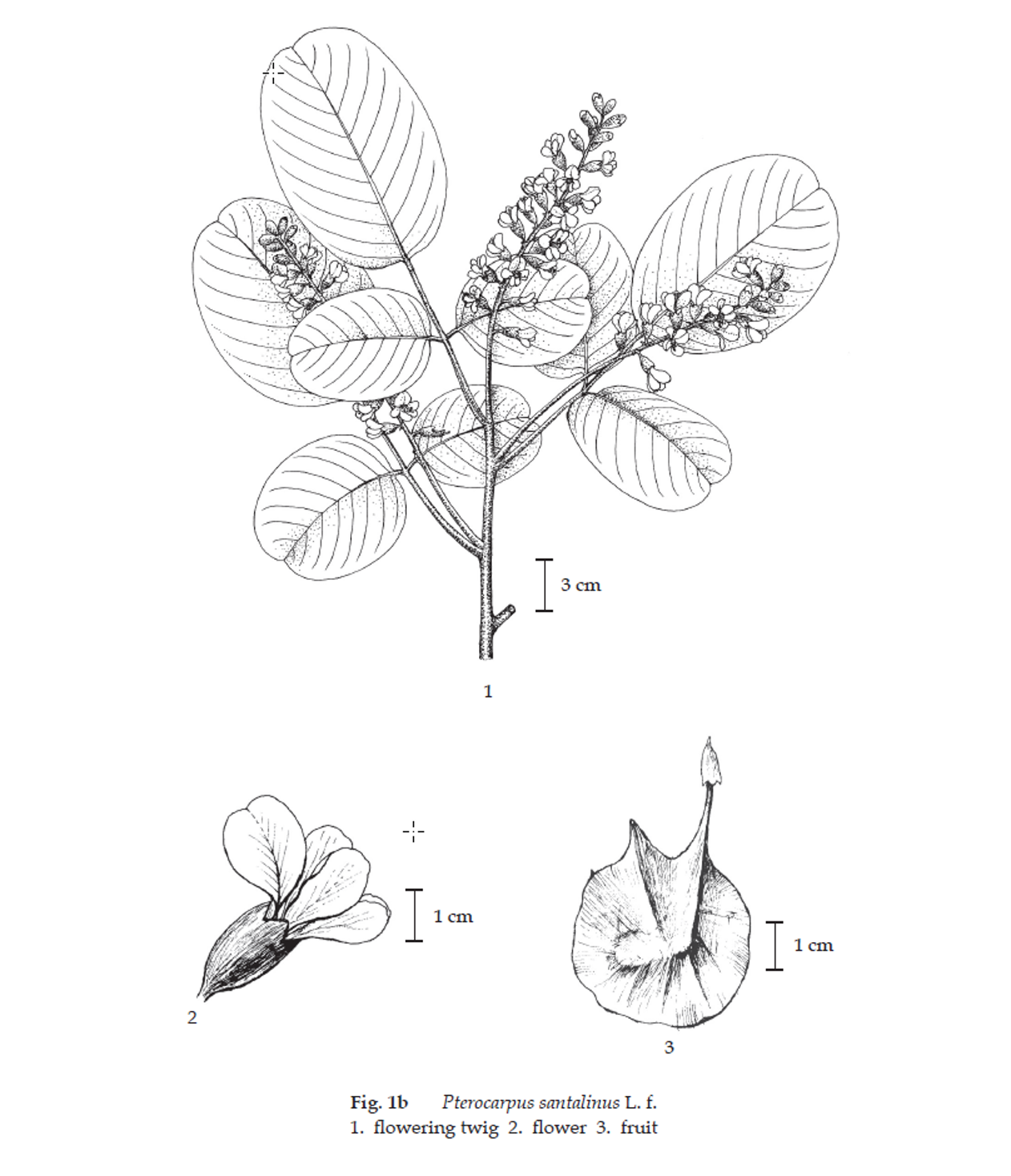
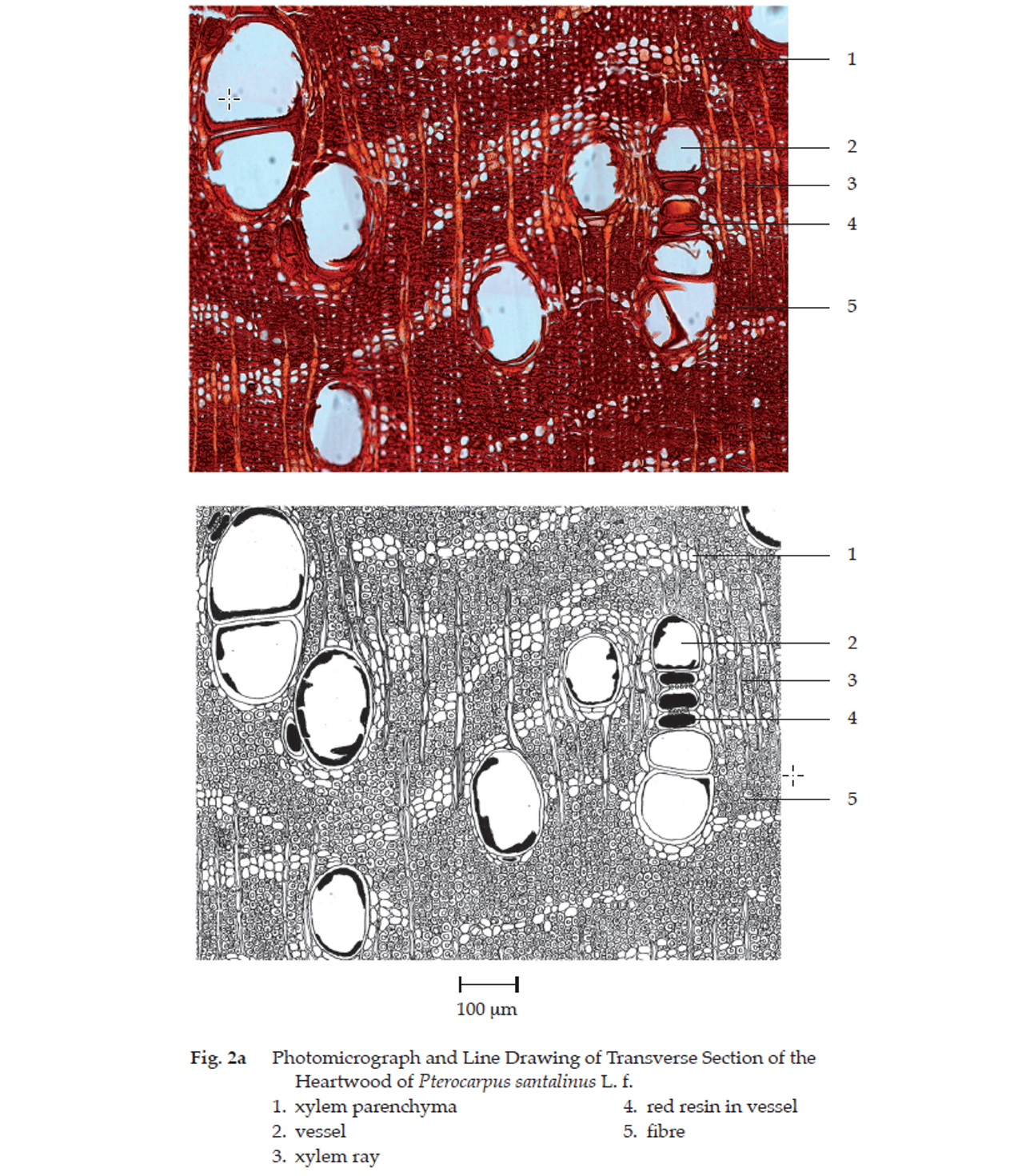

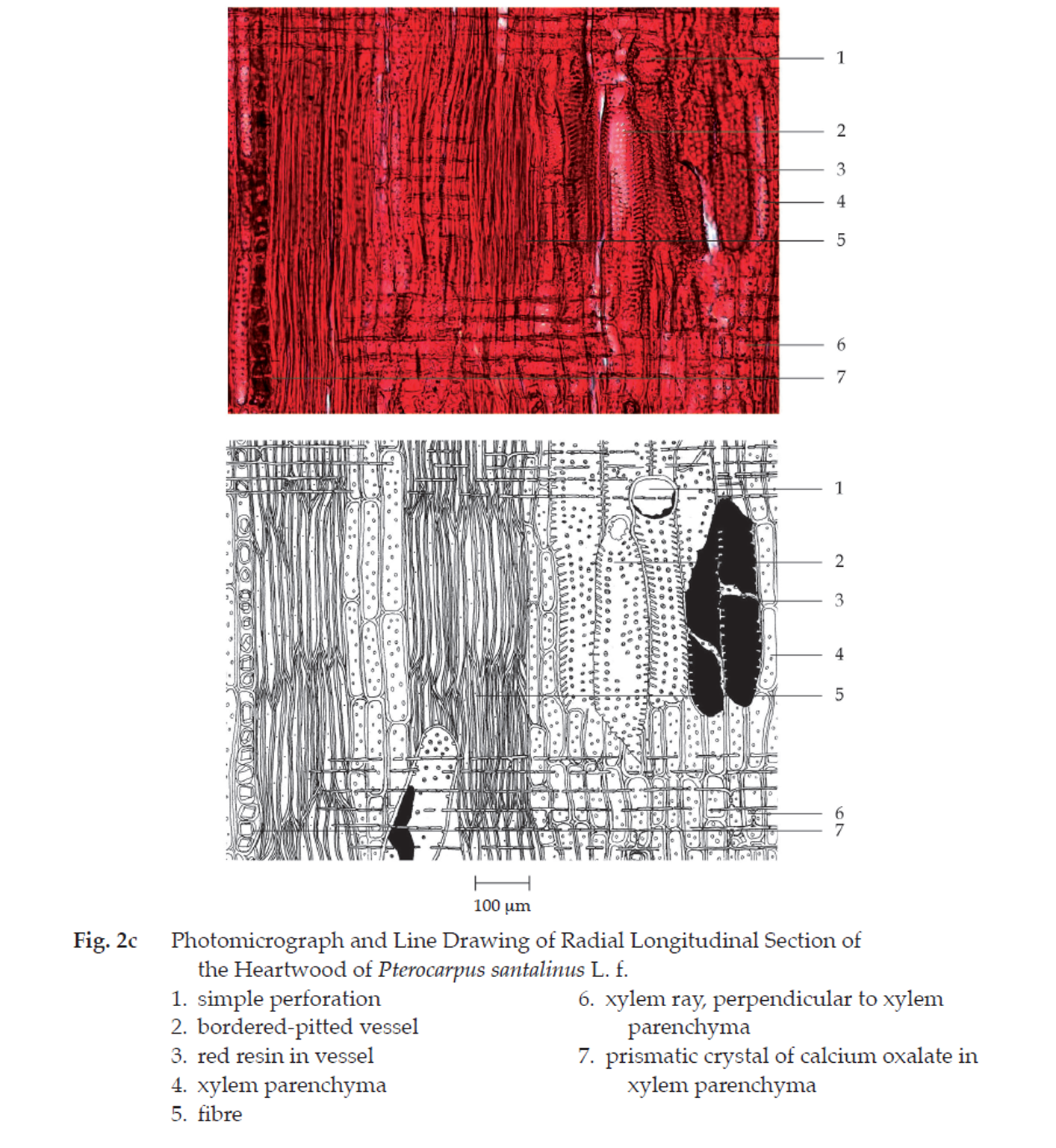
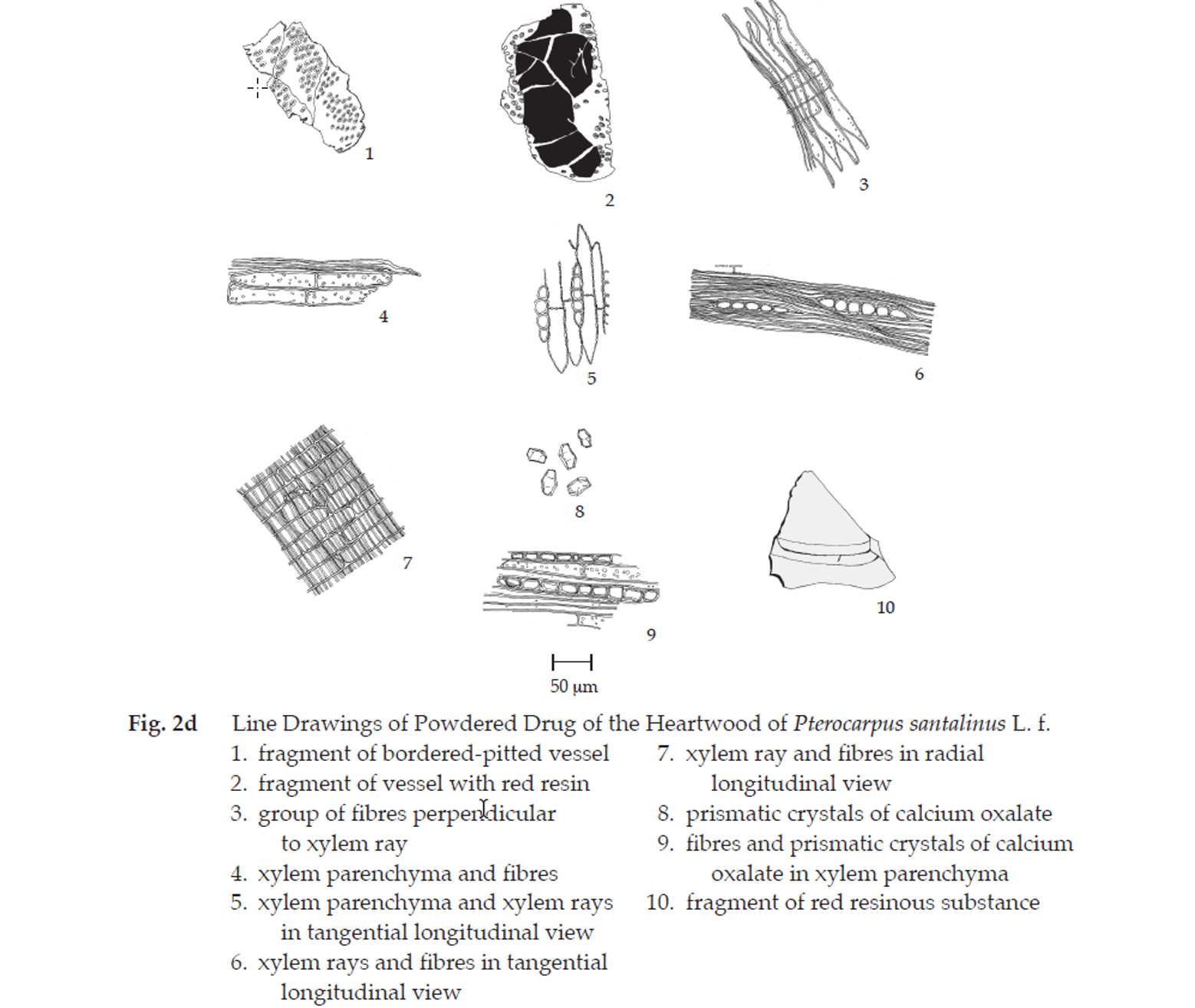
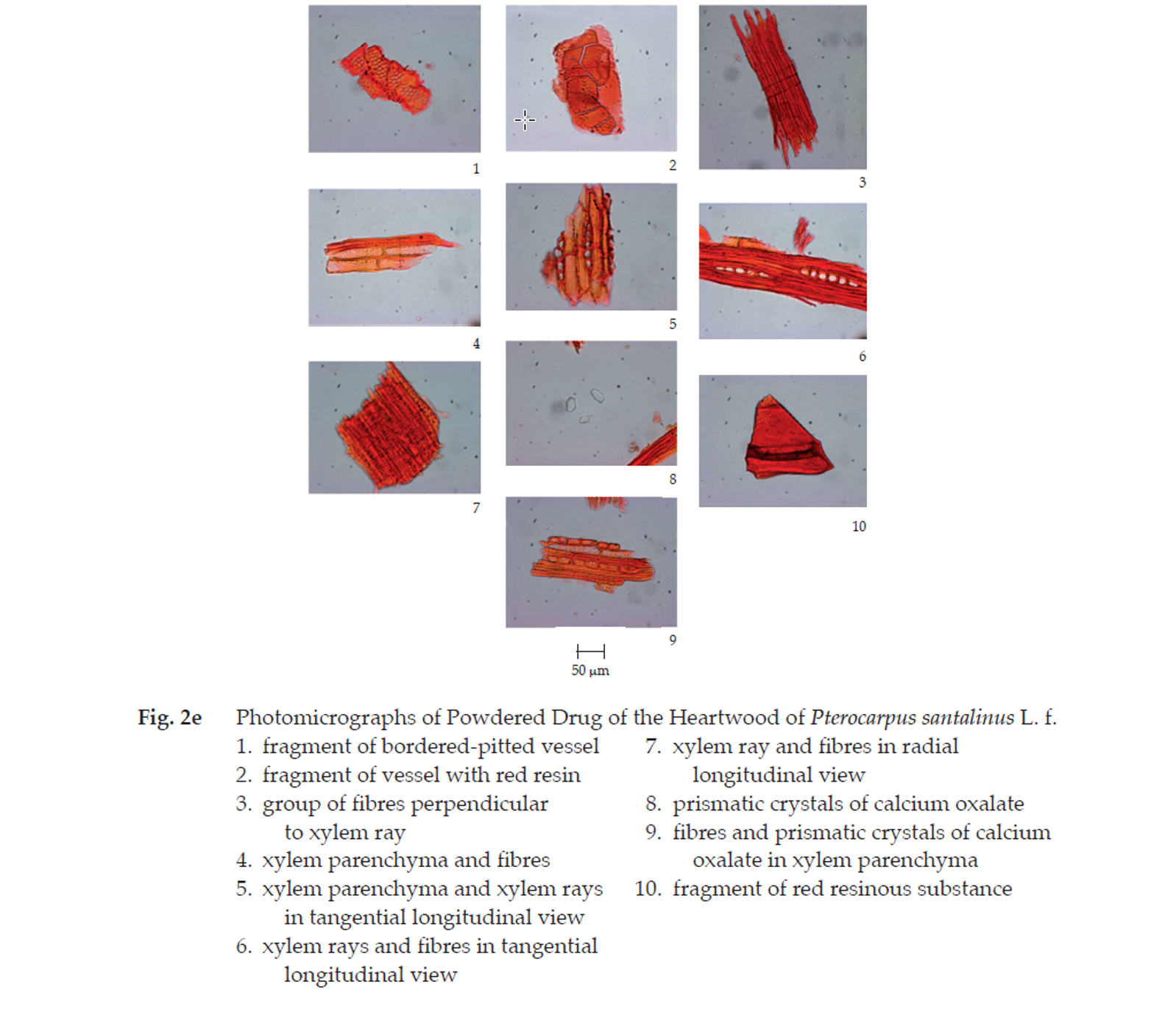
Identification
A. Reflux 1.2 g of the sample, in powder, with 30 mL of methanol for 30 minutes and filter (solution 1). Evaporate 2 mL of solution 1 to dryness. Dissolve the residue in 1 mL of acetic anhydride, slowly add a few drops of sulfuric acid and mix: a deep brownish red colour develops.
B. Carry out the test as described in the “Thin-Layer Chromatography” (Appendix 3.1), using silica gel GF254 as the coating substance and a mixture of 80 volumes of hexane and 20 volumes of ethyl acetate as the mobile phase. Apply to the plate, 5 µL of the test solution prepared by evaporating about 20 mL of solution 1 to dryness and dissolving the residue in 1 mL of methanol. After removal of the plate, allow it to dry in air and examine under ultraviolet light (254 nm), marking the quenching spots. Subsequently examine the plate under ultraviolet light (366 nm) through the cut-off filter; several blue fluorescent spots are observed. Spray the plate with anisaldehyde TS and heat at 110° for 10 minutes; several spots of different colours appear (Table 1); see also Fig. 3.
Table 1 hRf Values of Components in Methanolic Extract of the Heartwood of Pterocarpus santalinus L. f.
| Spot | hRf Value | Detection | ||
| UV 254 | UV 366 | Anisaldehyde TS | ||
| 1 | 7-9 | - | light blue | violet |
| 2 | 11-14 | quenching | - | - |
| 3 | 14-18 | - | light blue | violet |
| 4 | 20-24 | quenching | - | brownish purple |
| 5 | 25-29 | - | light blue | - |
| 6 | 32-35 | - | blue | - |
| 7 | 48-53 | quenching | light blue | brownish purple |
| 8 | 62-68 | - | intense blue | - |
| 9 | 69-72 | - | - | pale violet |
| 10 | 75-79 | - | light blue | - |
| 11 | 79-82 | - | - | violet |
| 12 | 83-87 | - | light blue | - |
| 13 | 87-90 | - | - | pale violet |
| 14 | 95-98 | - | - | pale violet |
| 15 | 98-99 | - | - | violet |
Loss on drying Not more than 8.0 per cent w/w after drying at 105° for 5 hours (Appendix 4.15).
Foreign matter Not more than 0.5 per cent w/w (Appendix 7.2).
Total ash Not more than 1.0 per cent w/w (Appendix 7.7).
Ethanol-soluble extractive Not less than 12.0 per cent w/w (Appendix 7.12).
Water-soluble extractive Not less than 1.0 per cent w/w (Appendix 7.12).
Dose 3 to 5 g a day.
